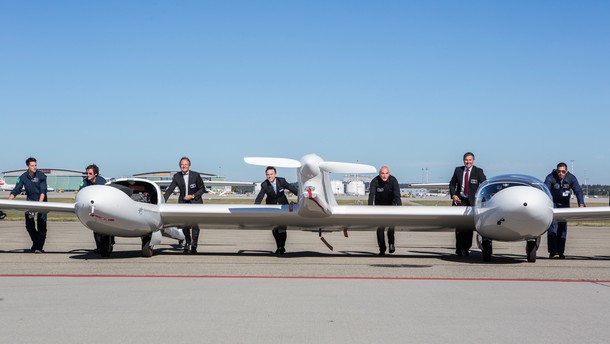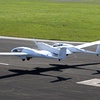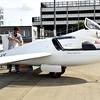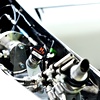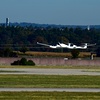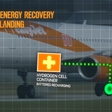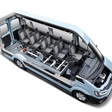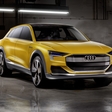
This groundbreaking HY4 fuel cell aircraft - with water as the only waste product - was developed by the DLR Institute of Engineering Thermodynamics together with partners Hydrogenics, Pipistrel, H2FLY, the University of Ulm and Stuttgart Airport.
As explained in DLR's press release, the power train consists of a hydrogen storage system, a low-temperature hydrogen fuel cell and a high-performance lithium battery. The fuel cell converts hydrogen directly into electrical energy, while the electric motor uses the power thus generated to propel the aircraft. If the hydrogen required for the fuel cell is generated via electrolysis using power from renewable energy sources, the HY4 can fly without generating any emissions at all.
The HY4 has a motor with power output of 80 kilowatts and can reach a maximum speed of approximately 200 kilometres per hour, while its cruising speed is set at 145 kilometres per hour. Estimated range varies between 750 and 1500 kilometres. The maximum weight of the aircraft is 1500 kilograms. HY4 also comes with twin fuselages, each with space for two passengers.
"With the HY4, we now have an optimal platform to continue developing the use of fuel cells on aircraft," says Josef Kallo, responsible for the HY4 project at DLR and a Professor at the University of Ulm. "Small passenger aircraft, such as the HY4, could soon be used in regional transport as electric air taxis and offer a flexible and rapid alternative to existing means of transport."
